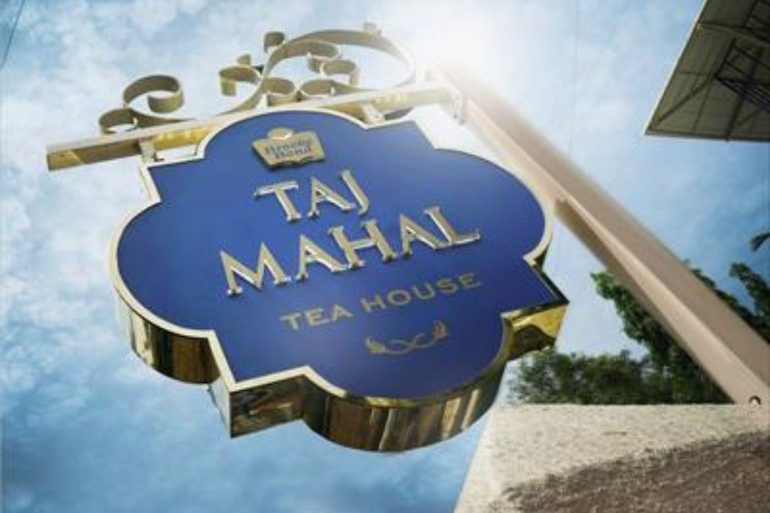A few days before any trip, whether it’s a weekend in Lonavala or a month in Croatia, my mother makes sure her tea game is in place. The trademark blue and gold box lands on the kitchen counter and she rations out the requisite number of tea bags for herself and my father for the number of days they will be traveling.

It’s a ritual she follows faithfully, because without it her mornings aren’t complete, no matter which country she’s in. And if she’s thousands of miles from home, it’s that familiar taste that brings her back, even if for a few sips, before she can tackle a day of traipsing around a foreign place.
This is a familiar story for many who hold tea as dearly as my mother does. The cliché is that India runs on tea; and to fill over a billion cups each morning, afternoon and evening, there are well over 50 brands of black tea available in the country today. Dominating this cluttered market are TATA Tea, Brooke Bond, Wagh Bakri and a handful of others, each offering a myriad variants at different price points.

From the roadside ‘chai tapri’ to the complimentary tea kit provided in hotel rooms, we’re certainly not all tea connoisseurs. When tea is this intrinsic to daily life, there are bound to exist very strong loyalties. My mother swears by Brooke Bond Taj Mahal Tea, which belongs to the premium segment of Indian tea brands. She’s not alone, as it is also the top seller in the category.
A café opened in Bandra—The Taj Mahal Tea House, conceptualised by Hindustan Unilever (HUL), who own the Taj Mahal brand. An interesting move for an iconic brand, this led us to dig deeper into the story of Taj Mahal.
Wah Taj!
Ustad Zakir Hussain, a rising star and gifted musician, is seated in front of the legendary Taj Mahal in Agra, practising his tabla. A voiceover explains the hours of practice and rigour that go into his quest for perfection, not unlike the hundreds of hours of tasting and trials that go into making the perfect blend of Taj Mahal Tea. At the end of the performance, the Ustad is handed a cup of tea accompanied with a, “Wah Ustad, wah!” (Bravo Maestro!) Rather than accept praise for his mastery of the instrument, he says, “Arre huzoor, wah Taj boliye” (Say bravo Taj instead), passing all the credit to his beloved tea.
Until then, Taj Mahal employed the tried-and-tested formula of advertising, as you can see in these print ads that highlight the taste and strength (liquor) of the tea. For Taj Mahal Tea, this ad was a defining moment that etched the catchphrase into the collective consciousness of an entire country.
At first listen, the pairing of tea with classical music is an unusual one. Yet for over a decade, we were accustomed to the sight of Ustad Hussain seated in front of the Taj, playing the tabla and then being handed his cup of tea.
The ads and the long partnership between Zakir Hussain and Taj Mahal (the longest association between ambassador and brand, we are told) had something to do with bringing the tabla, and consequently Hindustani classical music, into people’s homes. While some would cringe at an artist selling out to a brand, it played a role in making the music accessible and even aspirational, something no one had been able to do until then.
Through the years, the brand has associated itself with some of India’s most celebrated classical musicians. Classical music, we are told, highlight the brand values—craftsmanship, authenticity, sophistication and passion.
To this end, Taj Mahal has associated with iconic classical musicians such as Ustad Zakir Hussain, Ayaan Ali Khan, Niladri Kumar and most recently Rahul Sharma.
Rigour & Expertise
Tea has been India’s preferred drink since the first tea plantations were formed in the 1830s. Today, it is the second largest producer of tea in the world, and Indians consume 25% of the world’s tea. From the morning cuppa, to conversation starter, to wake-meup, to the intensity of cutting chai, it holds our fascination in more ways than one.
The particular blend known as Brooke Bond Taj Mahal Tea was created in 1966 in Kolkata. It was labeled as India’s best tea, made from the rarest and finest tea leaves. This was the birth of India’s first premium tea brand, a promise it strives to uphold, as its website declares, “By the time-tested principle of combining the finest traditions of tea-making with the latest innovations in technology.


This principle is based on three unshakeable pillars—selection of only the finest tea leaves from the best tea gardens, blending the leaves for the perfect combination of strength and flavour, and quality assurance to ensure the tea stays fresh when it reaches you.” This philosophy has led to a number of innovations in the Indian tea industry, which include the introduction of tea bags in India, and vacuum sealed packaging in 1987.
The Theater of Tea
On 15 August 2015, The Taj Mahal Tea House opened its doors in a quaint old bungalow in Bandra. The decision to create a tea house, as opposed to a retail outlet was taken by the HUL team, as was the specific location.
For a company that owns roughly 30% of the market share of tea in the country, sales was clearly not on the agenda. For them, it was not about how many cups of tea they could sell, but “creating an evocative experience”.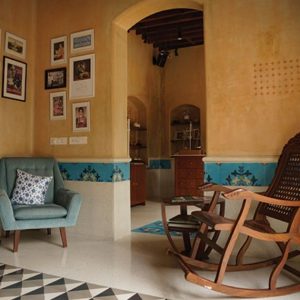
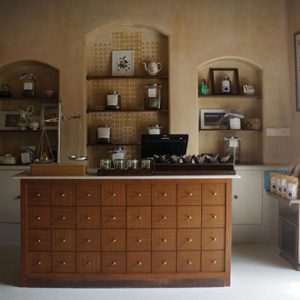
The Tea House is a charming blue and white, colonial-style bungalow that looks like a typical Bandra home. “It was absolutely clear that we wanted to be driven by the values of the tea, not by the branded graphics of the tea…and they ARE there. You’ll see each cushion has been beautifully designed to pick up nuances and there’s a play. But they’re not in your face. The bigger thought process was—how do I evoke this [the values]? We arrived pretty quickly at: this is a connoisseur’s home.”

“It ties back to authenticity and respecting nuances. Even from a pure iconography level, taking elements from the brand, you’ll see they are discreet and elegantly played with. But more importantly are the values coming through? For instance, if it’s ‘Expertise’, the guy making the tea is not tucked away in the kitchen, he’s at the forefront and you can see the theater of tea happening.”
Along with fine teas, Taj Mahal’s strong association with art and music, add dimension to the refined tastes of this ‘connoisseur’s home’. At the Tea House, one can find Zakir Hussain’s original tabla, signed by him, on display, along with an assortment of musical ephemera that have been detailed and displayed the way one would in a real home—a device that Basrai, who also designed the Smoke House Deli in Pali Hill, has perfected.
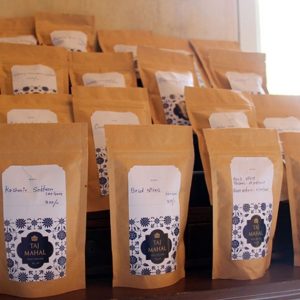
“This is not a branded café/chain, there are no cheap backlit vinyls across that say replicability. This is individualism…This puts challenges on the next one that HUL will open, because it will need to be a unique home. It can’t be cookie-cutter,” says Nanda.
Instead it’s about letting a customer find the perfect quiet nook, an oasis of calm in the city. “The way it’s designed, the codes that are given to you, it’s not the most comfortably designed space for you to open your laptops, get your power coffee and do that power conversation on Skype. It’s designed to be more laid back.”
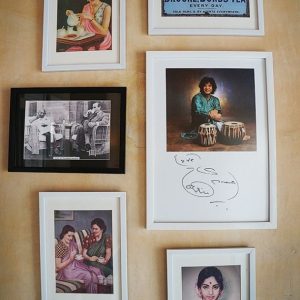
Owing to the size of the business, there’s no doubt that plans to scale to other locations and even cities are brewing. For HUL, this is also an extremely valuable brand, and the team have been actively involved in the launch of the first tea house.
As Alok Nanda mentioned, “The next step is to leverage a place like this to create further impact for the brand. That’s a journey that has just begun.”
It’s still very early days to predict how this experiment will play out for HUL, but Taj Mahal Tea remains as strong as ever.
Our visits to the Brooke Bond Taj Mahal tea house have always been pleasant and the place is quite the favourite of many lately. Do make time for it when you in this side of town.
A version of this article was published in Kyoorius 28.
Kyoorius is a bi-monthly print magazine on visual communications. Subscribe here. For buying a single copy (or any of the previous issues), write to us at subs@kyoorius.com. You can order the issue from Tadpole and Paper Planes, get the digital copy from Magzter and also buy it from bookstores near you. For any feedback on the magazine or to submit your work, do drop in a mail to us at editor@kyoorius.com. Follow us on Facebook and Twitter.

